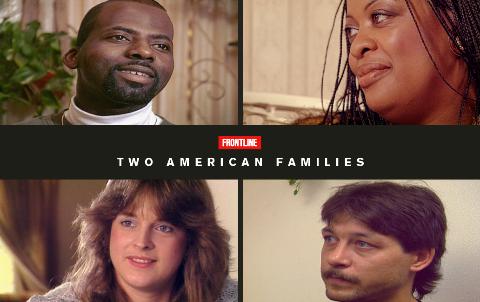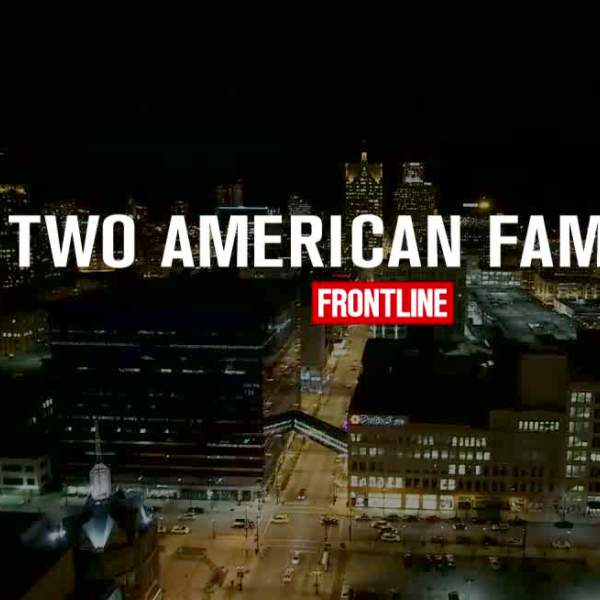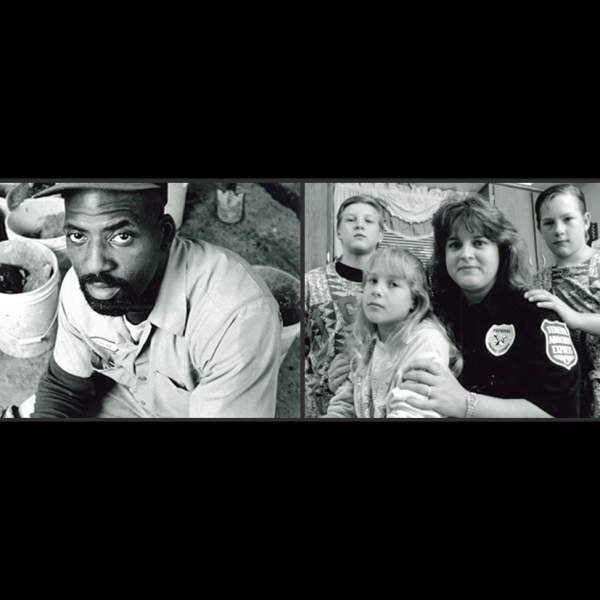I’ll cut straight to the chase: The PBS/Frontline documentary Two American Families is bleak, so bleak it may make you lose all hope in the long-term viability of the American middle class. It is also stunningly thought provoking, and if I were you I’d not waste another second on this review but would cruise over to PBS.org and start streaming it. Right now.
But, here you are, still reading. So it seems evident that I need to do a bit more to convince you that these 82 minutes of film will be very worth your time, because they are. First, these 82 minutes will be unlike anything else you’ll watch this year. Second, in an era in which TV news is mostly pundits jabbering away about stuff they know scarcely more about than you do, there remain two oases of serious investigative broadcast journalism: CBS’s 60 Minutes and PBS’s Frontline. A lamentable state of affairs for sure, but it makes a film like Two American Families all the more a gem.
In 1991, Frontline sent Bill Moyers and a film crew to Milwaukee, where they began tracking the lives of two typical working class families. Over the next two decades – yes, two decades – the crew returned to Milwaukee every few years to check up on things like familial cohesion and economic fortunes. Can you think of a program other than Frontline that has both resources and the sheer patience to embark on this sort of project? Me neither.
Third, there’s plenty of data out there charting the ever more dire economic prospects of the American middle class. As the income and wealth of America’s richest have sky-rocked, middle tier net wealth has plummeted (currently it’s at its lowest level since the early 80’s) and middle class wages have been on a similar downward spiral. Likewise, the sorts of jobs that once assured the working class of a pathway to the middle class – moderately skilled, unionized manufacturing jobs – have vanished. This film puts bleak human faces on those bleak economic facts.
When we first meet them, in 1991, these two families, the Stanleys and the Neumanns – one black, one white – are similar in most respects: recent newlyweds with young children, husbands who hold well-paid union jobs, and value systems that prize church-going faith, hard work, and family life. Both families are also bursting with optimism about the future. These working class folks are dreaming big dreams – dreaming the American Dream. We watch them imagining a climb from the working class into the middle class with all that that entails: home ownership, college education for their children, and secure retirement.
What happens to both families over the next 20 years can only be described as tragedy. As corporations chase cheap labor into non-union states and beyond U.S. borders, and as the U.S economy shifts dramatically from making goods to providing services, the Stanley’s and Neumann’s see their road to the middle class dead-end. Both sets of husbands and wives are forced to work a precarious succession of service-oriented jobs that barely keep food on the table and often do not provide for adequate healthcare, let alone mortgage payments. And with both parents working nonstop, the family life of both the Stanley’s and the Neumann’s deteriorates. Their children don’t receive the attention they need to succeed in school, their marriages are strained, and by the end of the film – Moyers pays his final visit to Milwaukee in 2012 – both families seem utterly exhausted, beaten down, incapable of dreaming much of anything.
And when Moyers checks in with their now-grown children, the picture only gets bleaker: Escalating college costs have meant that among the children of both families – a combined nine kids – only one, the Stanley’s eldest son Keith, is able to realize the dream of a college education. Keith turns out to be the one character at film’s end with a modicum of financial security and a life that stands to be different than was his parents’. And even his path through college almost wasn’t: his parents had to charge his tuition on a Discover card, wracking up insane debt in the process. This is a debt from which they’ve never really recovered, and they – and the other eight children in the two families – seem destined to endure lives as precarious as their parents.
If that’s not bleak I don’t know what is. And in a television age that tends to prize either realist escapism (Duck Dynasty? Storage Wars?) or gritty fiction (Breaking Bad? The Wire?) Two American Families offers neither a comforting escape from our own struggles or confrontation with an actual problem viewed from behind the safety glass of having been fictionalized. But being bleak and unimportant are not the same thing.
And Two American Families is exceedingly important. It puts faces on those most affected by our current political climate. It visualizes for us the effects of our seemingly amorphous discussions about the future of the American economy. It concretizes the removal of our social welfare programs. And it also dispels numerous common myths about those people. For example, poor families are often vilified as slothful food stamp mongers (and, for that matter, as mostly black). Many politicians still adamantly hem to the Puritan myth that hard work and strong family values guarantee economic prosperity. But the stunning thing about these families is that both do everything in their power to succeed… and still fail. Their lives seem a brutal struggle against forces beyond their control, against fates that do not discriminate by skin color.
Two American Families also informs present policy debates. First, it suggests the folly, in the short term, of disassembling the social safety net, which some legislators seem presently intent upon (c.f., this summer’s passage of a farm bill sans food stamps.) Many Americans who rely on social welfare programs do not do so because they’re too lazy to hold down a job but because their employment options are stunningly depressing.
Second, it demonstrates the toll the sorts of jobs available to today’s working class extracts from families. Watching this film, it strikes me that an economic situation in which both parents toil away night and day at multiple jobs and are left with no time to tend to incidentals like marriages and children is a much more serious threat to the “American family” than other, more inflammatory, causes.
Thirdly, the film forces us to consider the kind of workforce we ought to be presently designing, if we’re to survive our nation’s New Economic future, and how it compares with the one we are designing. In an economy in which decent paying low and medium-skilled jobs have almost completely dried up, strategic thinking about – and investment in – education is more critical than ever.
Finally, for Catholic Christians the message of this film takes on unique urgency. Pope Francis has been speaking relentlessly about the pressures of economic inequality and the “globalization of indifference” – a sort of unchecked capitalism that generates just the sort of subhuman conditions the Stanley’s and Neumann’s have endured over the past twenty years. For us, the Pope suggests, our religious faith should lead to interventions in the political realm, interventions aimed at fostering a more humane economy both globally and here in America. Two American Families drives that point home.
You have been warned: this film is bleak as hell. It will not distract you from one of the most difficult and pressing issues of our time, it will not even present them from the single step of removal that fiction allows. It is not reality television, but actual reality, and this reality is bleak. But it’s the need to face, to confront, this bleak reality that makes Two American Families very much worth every one of its 82 minutes.
***
The cover image is taken from the PBS/Frontline website which can be found here.




